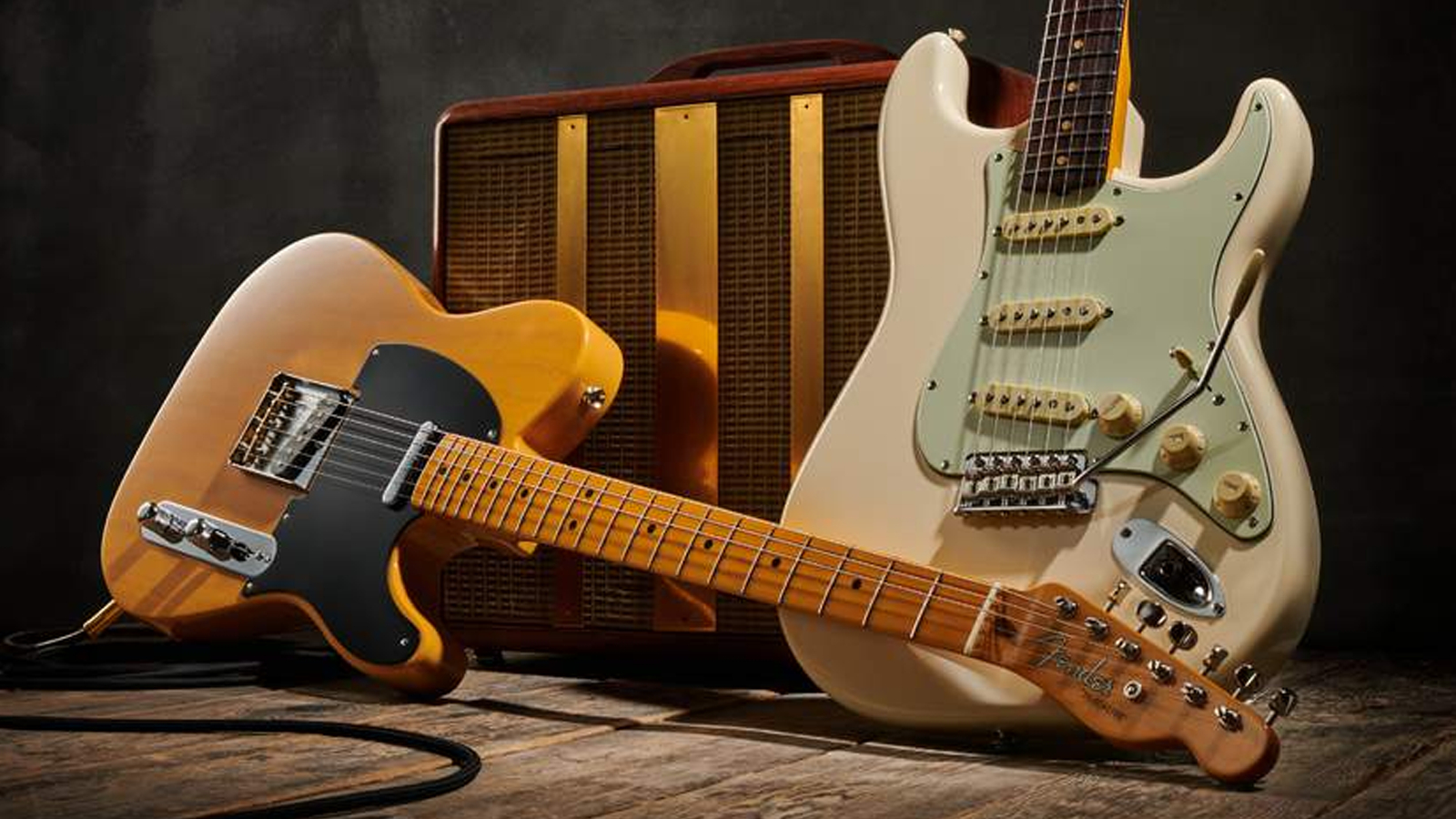
From humble beginnings as a radio repair shop in Fullerton, California to arguably the most well-known guitar brand in history, Fender’s story is one of invention, innovation, and determination. This American institution has not only changed the face of the guitar forever with its pioneering models and technology but has also shaped the course of popular music. We’d go as far as to say that without Fender’s revolutionary guitar designs the world of music would look – and sound – very different indeed.
While the Californian guitar titan is credited with many innovations, today, we are going to discuss five that we believe truly transformed the guitar space forever. We are looking at creations that kicked off a chain reaction among instrument manufacturers and whose influence can still be felt today.
So, whether you’re a Tele fanatic, a Strat superfan or a Jazzmaster purist, we think you’ll agree that these five innovations from Fender transformed the world of guitar for the better.
1. First mass-produced solid-body electric guitar
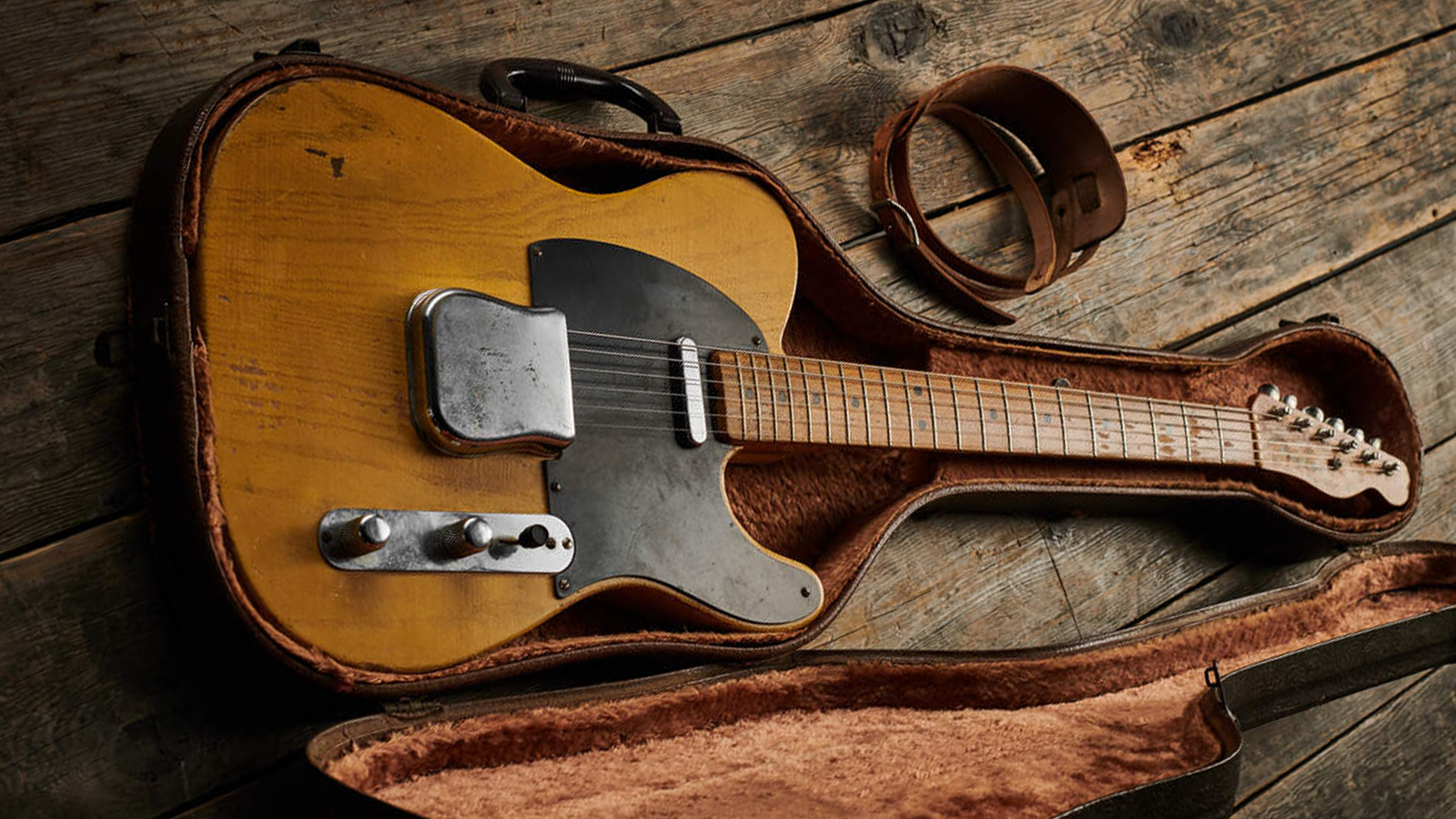
Arguably one of the most important inventions of the 20th Century, the Broadcaster would be the stone that caused a ripple in the sea of electric guitars that we can still feel today.
Contrary to popular belief, the Broadcaster – later known as the Telecaster – wasn’t actually the first ever electric guitar. There had been many hollowbody guitars before it, and in fact, it wasn’t even the first solidbody electric either.
Okay, Leo may not have technically been the first to have the idea of a six-string that didn’t have to be confined to the rules set by its acoustic brethren, but he would be the first to mass-produce a solidbody instrument – and in doing so created an entirely new breed of guitarist.
The Broadcaster and its one-pickup sibling, the Esquier, didn’t look like anything else on the market, and its characteristically twangy tone didn’t sound like anything else, either. Pair this unique tone with the revolutionary bolt-on neck design – which made replacing worn-out necks easier than ever – and you have a guitar that perfectly captured the imagination of the players of the day and it wasn’t long before Leo had a hit on his hands.
Of course, there are many Telecasters available today from cut-price Squiers to faithful reissues of vintage examples. Check out Fender.com to get your hands on the perfect Tele for you.
2. The Precision Bass was a game-changer
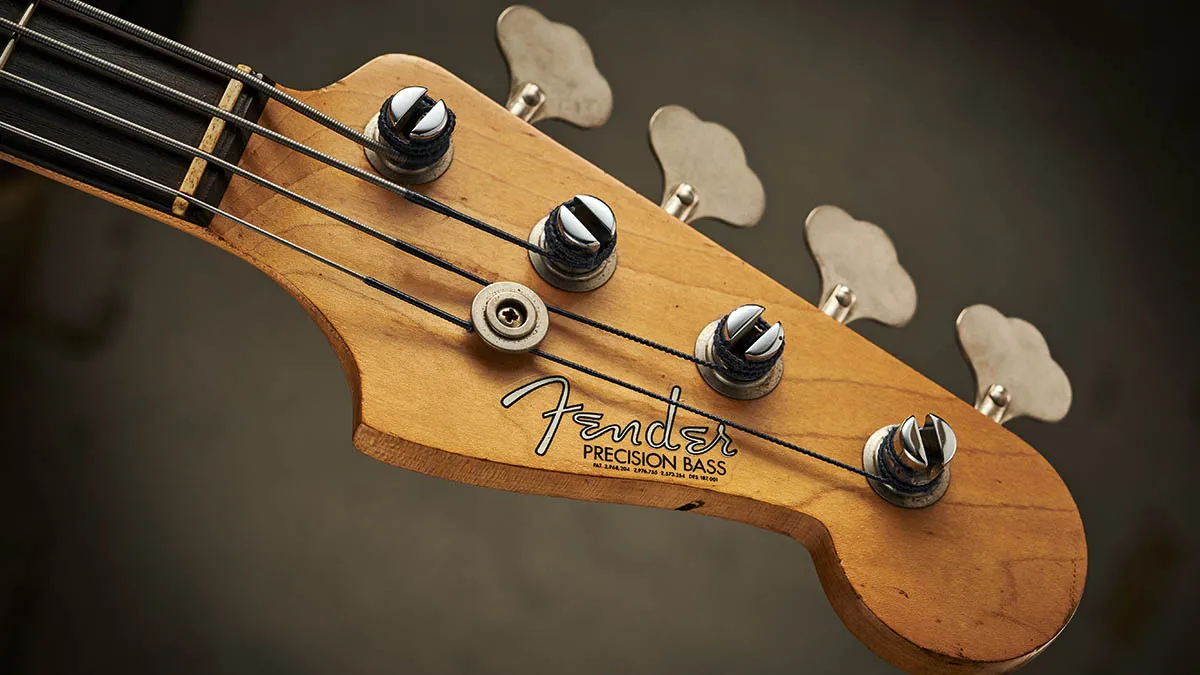
Not happy with simply revolutionizing the guitar space, Leo next set his sights on giving an electrified voice to the double bass players of the era. These large and cumbersome acoustic instruments were often the backbone of the band, but as the music of the day was getting louder and more contemporary styles were emerging, Fender decided to gift the bass players a completely new instrument in the form of the Precision Bass. Just like the electric guitar, Leo wasn’t the first to design an electric bass guitar – that honor goes to Paul Tutmarc, who developed a bass-like instrument way back in 1935 – but Fender would perfect it.
Using the Esquire and Broadcaster as his blueprint, he would reimagine his previous creation, elongating the neck to 34" and designing a new style of pickup that would be able to handle the low end of this new instrument.
Now, while Leo commandeered many design elements from his aforementioned guitars, such as the headstock shape and the control plate layout, he completely redesigned the body shape, opting for two horns, which provides better balance.
It can’t be understated just how big an impact this electric bass guitar had on music. Without the P-Bass, it could be argued that rock ‘n’ roll would have had a hard time straying from its blues roots and wouldn’t have evolved into the heavier and louder sound we all know – and love – today.
3. The expressive Synchronized Tremolo
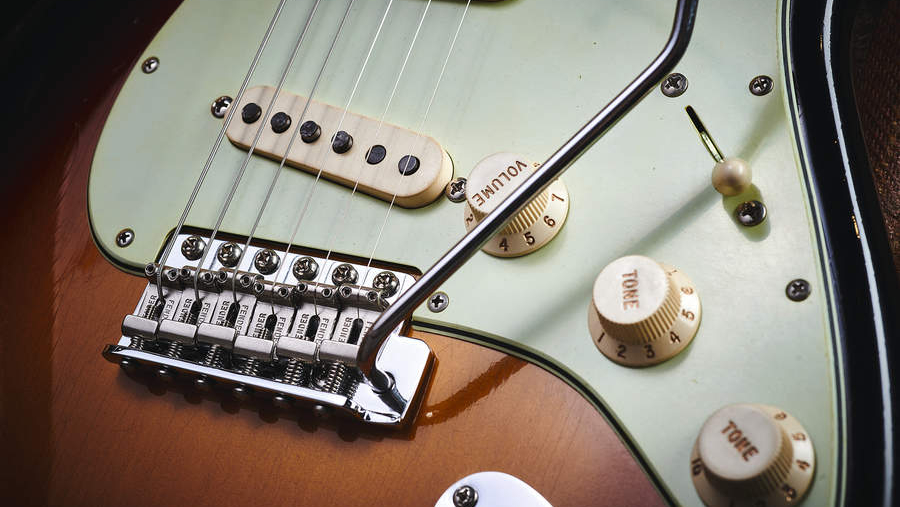
Now, while we could have certainly given an entire entry to the Stratocaster, we’ve decided instead to showcase one single design element that made its debut on that legendary guitar – the Synchronized Tremolo.
Introduced in 1954, this vibrato system elevated the concept of a “whammy bar” to a whole new level and even helped inspire modern units such as the Floyd Rose in the late ‘70s.
Unlike the Bigsby – which was popular at the time – Leo's synchronized tremolo opted for a simpler design that not only offered players a more extreme range of pitch movement but also better tuning stability. This is due to the way that the saddles move together with the bridge as one unit.
4. The birth of the offset guitar
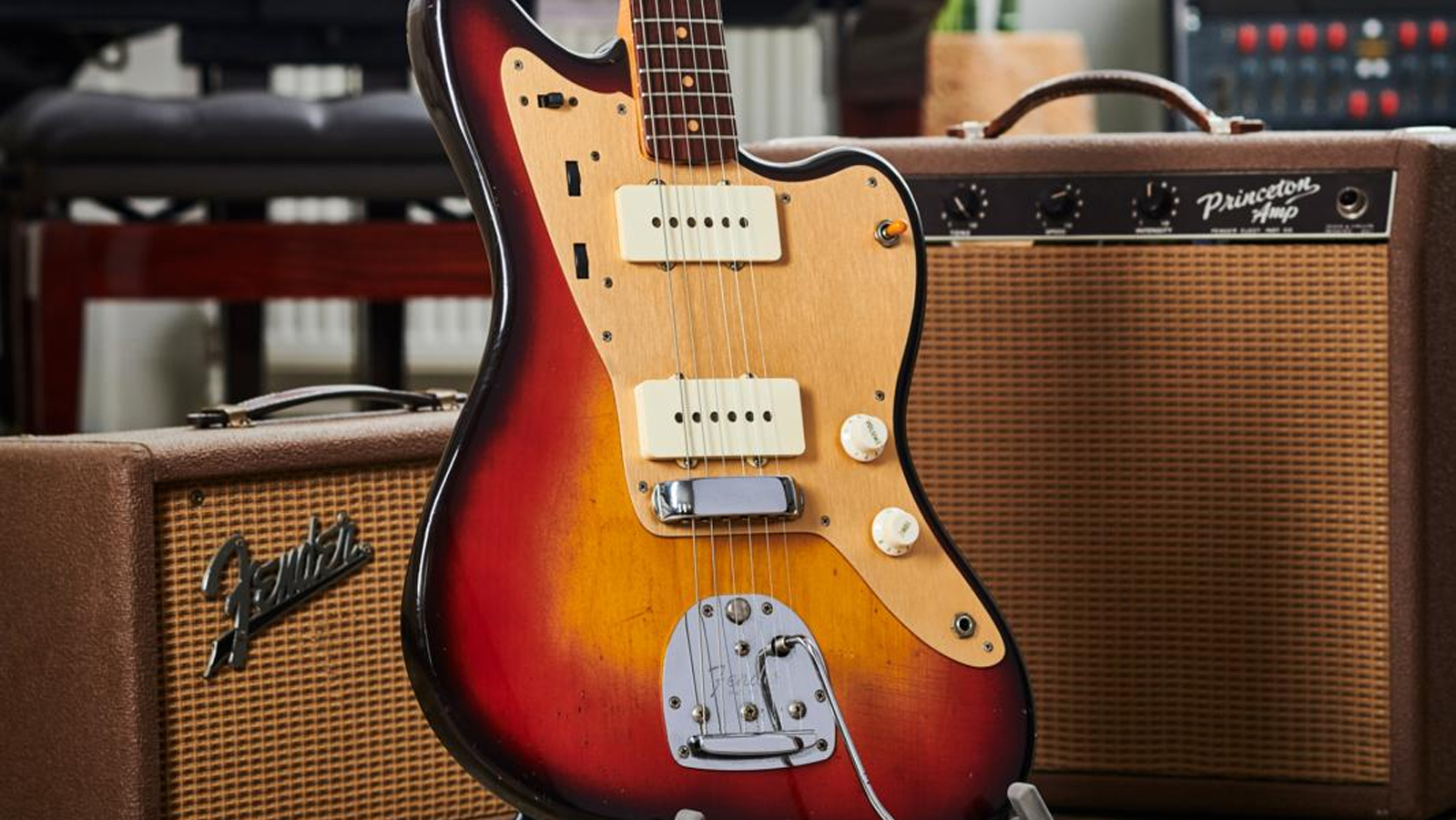
From our modern viewpoint, the asymmetric design of an offset guitar seems like an obvious evolution of the electric guitar’s lineage, but in the mid to late ‘50s, this concept was seen as futuristic and a little daring.
Today the offset has been imitated many times, with almost every manufacturer having at least one guitar with a crooked waistline in their catalog – but it all started with a student model in 1956.
Fender’s Duo-Sonic is widely accepted as the first offset guitar, but unfortunately, it didn't quite take off like the Telecaster or Stratocaster that came before it. This lack of success wouldn’t deter Fender from trying again to get their offset format off the ground, and two years later, they would launch what is arguably the reigning king of the offset models, the Jazzmaster.
Originally developed to be more comfortable in a seated position – as that’s how most jazz guitarists played – this guitar was way ahead of its time and while it didn’t light a fire in the jazz community, this misaligned six-string would go on to be the face of alt-rock, grunge and surf.
Fender now makes many offset models, with various versions of the Jazzmaster, Jaguar, Mustang, Bass VI, Meteora, and Duo-Sonic available at many price points.
5. Bridging the gap between electric and acoustic
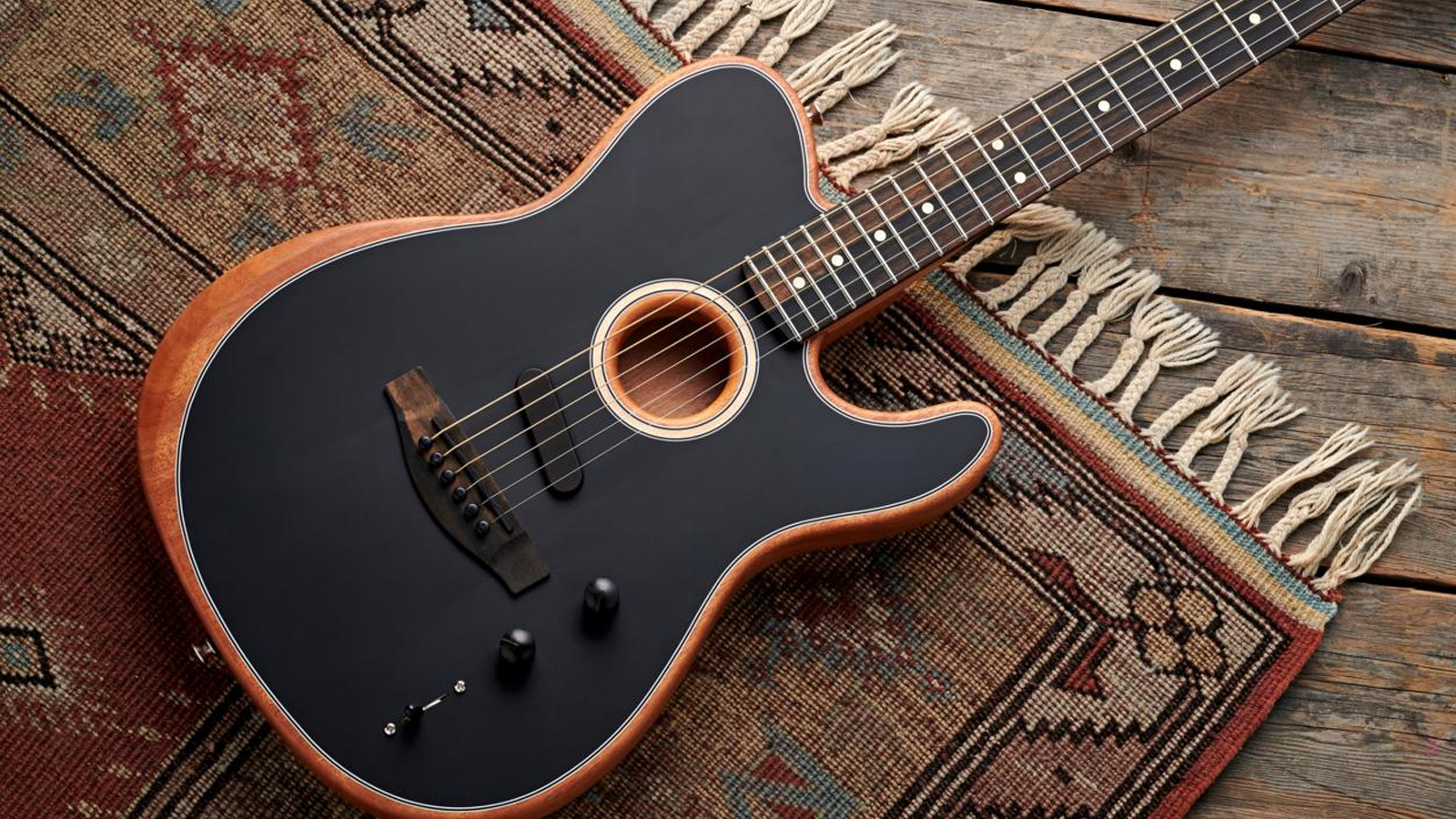
Playing an acoustic guitar on stage can pose quite a number of problems. From feedback to lack of volume to scratchy highs and boomy lows performing with an acoustic guitar isn’t always as straightforward as it would first appear – and things only get worse when you want to switch to an electric guitar for a solo.
That’s where Fender’s innovative Acoustasonic comes in. This hybrid acoustic-electric guitar was developed to bridge the gap between both worlds, making it easier than ever to nail the perfect acoustic and electric tone live.
Using the iconic outline of the Telecaster as a starting point, the Acoustasonic takes Fender’s most recognizable guitar in a completely different direction. Featuring a unique hollow body design with transverse bracing, a bolt-on mahogany neck and a Sitka spruce top, this guitar may look like an electric, but it is built like an acoustic.
The Fishman-designed Acoustic Engine supplies the electrified tones. This trinity of digital and analog technology includes a Fishman under-saddle transducer, a Fishman Acoustic Enhancer, and Fender’s Acoustic noiseless N4 magnetic pickup. This clever pickup system can emulate 10 modeled body styles and tonewood combinations.
This guitar, introduced in 2019, proves that even after 78 years in the business, Fender is still finding ways to innovate and progress the guitar medium.
Read more
- Fender vs Squier: What's the difference?
- Jazzmaster vs Jaguar: Learn more about these iconic guitars
- Fender Jazz Bass vs Fender Precision Bass: two bass icons head to head
- These are the best Strat-style guitars for all budgets
- Best Fender amps for home and stage
- Best Squier guitars, including Strats, Teles, Jags and more







